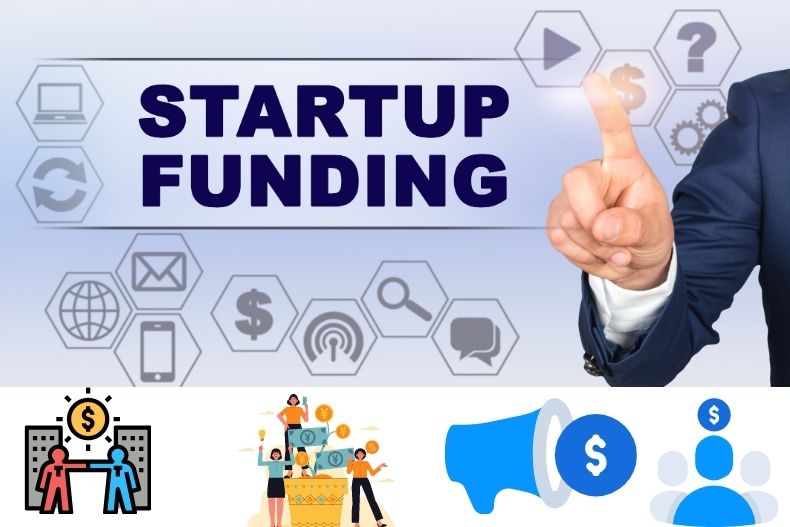Many businesses may not understand how the different stages of venture capital funding work. Venture capital can benefit firms at any stage of development, from seed money to series A, B, and C funding and beyond.
In order to secure venture capital funding at these different stages, companies need to be able to demonstrate that they have outstanding growth potential in their chosen industries. Venture capital firms are looking for companies that meet a certain set of criteria, and they expect to receive a controlling equity stake in return for their investment.
Startups all have different paths to success. Businesses often spend months or years in search of funding, while companies with truly disruptive ideas may be able to bypass some of the funding rounds and find themselves on the fast track to success.
Dan Lok, an investment and business expert, explains how the different stages of venture capital funding can benefit companies at various points in their development journey, going over Series A, B, and C funding and how companies can benefit from receiving them.

Understanding the Players
Before going over the different series of funding stages, it is necessary to understand the participants in the process. The first group that needs to be considered is the leadership team of the new company. As the business matures, it may be able to pass through the stages of funding, from seed funding all the way through series A, B, and C.
The other major figure in this situation is the potential investor. Investors want businesses to succeed because they are general proponents of entrepreneurship, but they also want something in return for their investment. This means that venture capital firms generally receive partial ownership of the company. If the company succeeds and is able to be sold or given an IPO, the investor will receive a large payout.
Before finding a company, the venture capital firm’s analysts will draw up a valuation. The factors that go into a valuation are management, market size, risk, and whether the company or its managers have a proven track record. Funding rounds are distinguished from one another by the valuation of the business, its growth prospects, and maturity level.
Early Stages
Pre-seed and seed funding come before Series A, B, and C. Generally, pre-seed funding comes from the business founders themselves, together with their friends and family.
Seed funding is the first external stage. It may be gained from an angel investor, venture capital company, or business incubator, among other sources. Seed funding assists with early-stage tasks like product development and market research. During the seed funding stage, companies are assisted when it comes to determining its final products and target demographic.
Series A Funding
After seed funding comes Series A. The business needs an established track record, including an established user base and consistent revenue figures in order to reach this stage. Companies need to have a solid business model that is primed for long-term profits.
The product may be scaled across different markets at this stage. A startup at the seed stage may have a great idea, but they don’t necessarily have the numbers to prove it. A Series A startup is beginning to establish itself.
Series A rounds tend to raise between $2 million and $15 million, though these numbers are on the upswing.
Series A funding requires more than a great idea. Investors are looking for companies with an excellent vision for the future as well as a viable strategy for turning it into a money-making business. In general, companies that qualify for Series A funding can be valued up to $23 million.
Series B Funding
Series B firms are moving past the development stage. Investors assist with this process by helping them extend their market reach. A company that has already passed through the seed stage and Series A already has a substantial user base. It has also already proven that is prepared to succeed. Series B funding provides the capital that is needed to ramp up the company to meet a high level of demand.
On average, companies receive about $33 million from Series B funding. There is often an anchor investor that is in charge of the process, together with additional investors that want to profit from the enterprise. The major difference between Series A and Series B funding is the advent of a new wave of bigger venture capital firms that specialize in funding companies at more advanced stages of development.
Series C Funding
By the time a company makes it to Series C, they are already highly successful. Series C funding makes it possible to expand market reach, develop new products, or acquire smaller companies. Series C investment focuses on scaling up the company, helping it grow as quickly as possible.
Buying another company is a quick way to scale up. Companies may choose a firm that has a complementary business model or one of their competitors. With Series C funding, a company will find that they are able to make an offer.
Investors who are looking for a lower risk profile arrive in Series C. Hedge funds, private equity firms, and investment banks may be a few of the groups who are interested in investing at this stage.
Beyond Series C
Some companies go on to receive Series D and E funding, but it is more common that companies have achieved independence by the time they are finished with Series C. Series C funding can be a great way to raise money to prepare for an IPO.
Venture Capital and Your Company
The average startup company shouldn’t expect to receive venture capital funding. If your company is established and already has a significant market share, you may be able to pitch it to venture capital firms for funding. Dan Lok encourages all entrepreneurs to examine their company’s finances and prospects to see whether they may qualify for Series A, B, and C funding.





